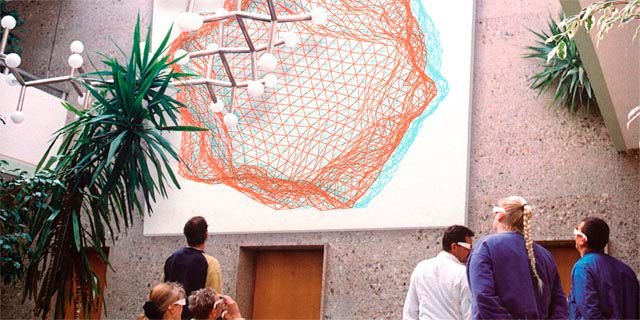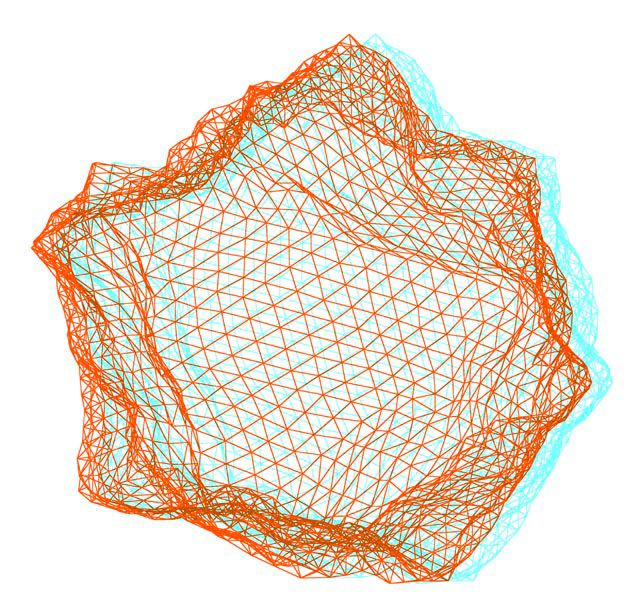Leo Schatzl
:
Enzesfeld-Lindabrunn Town Hall
Back
Information
'Stein006' is a result of the artist's preoccupation with the effect of objects in space. The image shows two perspective views of an image printed one over the other in complimentary colours, one out of phase with the other. Viewed through glasses with coloured filters the object looks three-dimensional.
On the occasion of his being invited to the Lindabrunn Symposium in 2001, Leo Schatzl turned his attention to the topic of 'stone', which was the material originally focused on by the symposium. The resulting works reflected the metamorphosis that takes place when a solid material such as stone is used in different media environments and situations, eventually transforming itself into an immaterial simulation.
The term anaglyph comes from Greek and means 'as if sculpted'. After having chanced upon an instructional text the artist began to experiment and work with the making of anaglyphs. This technique of stereoscopic spatial portrayal functions according to a simple principle. Two pictures taken from slightly different horizontal perspectives are superimposed upon one another in complementary colours, joining to represent a spatial object. When observing these images through a pair of glasses, the lenses of which are tinted with the corresponding two complimentary colours, the depicted object takes on a three-dimensional appearance.
The initial results of his work in the creation of anaglyphs came in the form of models he found on the Internet that formed the basis for the series From the Virtual Junkyard (1999). These models were transferred as anaglyphs from their original, virtual context to two-dimensional surfaces. Essential here were the images' large dimensions, which served to reach beyond the typical postcard-quality optical illusions. What is more the reductionist handling of the subjects had to overcome the doubtless popular practice of creating 3-D motifs from everyday objects. In these images' confidently asserted abstraction the spectacular nature of the 3-D effect was progressively relegated to the background. Schatzl's anaglyphic experiments introduce an intervention between images and sculpture. In doing so they separate the subjects from their popular illusionary effects. Freed of tinted glasses and the illusionary dictate, the images remain multi-layered – and unpredictable. That which is depicted is intuitively perceived by the observer, recognised via a subjective and situation-dependent process as a 'thing': The artist's work is marked not by the giddiness of amazement, but by the mystery of realisation.
(Ramón Reichert)


